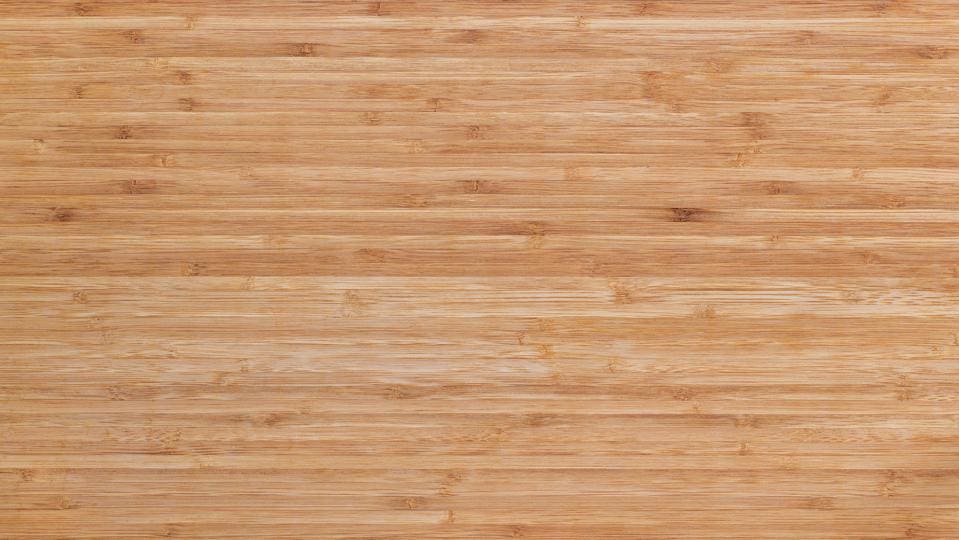
Sustainable bamboo flooring is a rapidly growing trend in eco-conscious home design. Tired of the environmental impact of traditional hardwood flooring? Looking for a beautiful, durable, and sustainable alternative? Bamboo flooring offers a compelling solution. It’s a naturally renewable resource, boasting strength and elegance, making it a perfect choice for homeowners seeking environmentally friendly options. This article will delve into the numerous benefits of choosing sustainable bamboo flooring, guiding you through selecting the right type, understanding installation processes, and addressing potential concerns. We’ll cover everything from sourcing and manufacturing to maintenance and overall lifespan, empowering you to make an informed decision for your home.
The Environmental benefits of Sustainable Bamboo Flooring
Rapid Growth and Renewal
Bamboo is one of the fastest-growing plants on Earth. Its rapid regeneration cycle significantly reduces the environmental impact compared to slow-growing hardwood trees. This rapid growth contributes to its sustainability, making it a responsible choice for environmentally conscious consumers. Many bamboo species mature in just 3-5 years, allowing for frequent harvesting without depleting natural resources. This contrasts sharply with hardwood trees that can take decades to reach maturity, often leading to deforestation and habitat loss.
Lower Carbon Footprint
Studies have shown that bamboo absorbs significantly more carbon dioxide from the atmosphere than many hardwood trees, contributing to a lower overall carbon footprint. Bamboo’s ability to sequester carbon makes it a valuable tool in mitigating climate change. Furthermore, the manufacturing process of bamboo flooring often utilizes less energy and produces fewer emissions compared to traditional hardwood flooring, further reducing its environmental impact. The reduced energy consumption during production means a smaller carbon footprint associated with the product itself.
Reduced Deforestation
The use of bamboo as a building material helps reduce pressure on traditional forests. By opting for bamboo flooring, you are actively contributing to the preservation of precious hardwood forests. This is crucial for biodiversity conservation and maintaining healthy ecosystems. This choice directly supports sustainable forestry practices and reduces deforestation-related problems such as habitat loss and soil erosion. Choosing bamboo signifies a commitment to preserving natural habitats for future generations.
Related Post : The Best Flooring Choices for Open-Concept Spaces
Biodegradability and Compostability
At the end of its life cycle, bamboo flooring is biodegradable and compostable, minimizing landfill waste. Unlike many other flooring materials that remain in landfills for centuries, bamboo decomposes naturally, returning nutrients to the soil. This contributes to a circular economy, minimizing the environmental footprint throughout the entire product lifecycle. This biodegradability makes bamboo flooring a truly sustainable option, significantly reducing its long-term impact on the environment.
Sustainable Forestry Initiatives
Many bamboo flooring manufacturers are actively involved in sustainable forestry initiatives, ensuring responsible harvesting and replanting practices. These initiatives help to preserve bamboo forests and ensure the long-term sustainability of this valuable resource. Look for certifications and labels that verify sustainable harvesting and responsible manufacturing practices. This ensures that your purchase supports ethical and environmentally sound practices.
Choosing Sustainable Bamboo Flooring: A Buyer’s Guide
selecting the Right Type of Bamboo
There are two primary types of bamboo flooring: strand woven and carbonized. Strand woven bamboo is created by compressing bamboo strands together, outcomeing in an exceptionally hard and durable floor. Carbonized bamboo undergoes a heat treatment process that gives it a richer, darker color and enhanced durability. Both types offer excellent sustainability credentials, but the choice depends on your personal preference and budget. Strand woven bamboo tends to be more expensive but also more durable.
Considering Sourcing and Manufacturing
It’s crucial to select bamboo flooring from reputable manufacturers committed to sustainable practices. Look for certifications like the Forest Stewardship Council (FSC) label, which guarantees responsible forestry management. Inquire about the sourcing of the bamboo and the manufacturing processes involved. A transparent manufacturer will be happy to offer information about their sustainability efforts.
Understanding Manufacturing Processes
Many manufacturers use environmentally friendly glues and finishes. Check the manufacturer’s specifications for details on the chemicals used in the production process. Look for low-VOC (volatile organic compound) finishes to ensure better indoor air quality. Low-VOC finishes help create a healthier indoor environment and contribute to a smaller overall environmental impact.
Installation and Maintenance
Proper installation is essential for the longevity and performance of your bamboo flooring. Engage a qualified installer who understands the specific requirements of bamboo flooring. Regular maintenance, such as sweeping and occasional mopping, will keep your floor looking its optimal. Avoid using harsh chemicals that could damage the surface or release harmful VOCs.
Lifespan and Durability
Bamboo flooring, particularly strand woven, boasts exceptional durability and can last for many years with proper care and maintenance. Its hardness and resistance to scratches make it a practical choice for high-traffic areas. Investing in high-quality bamboo flooring is a long-term sustainable choice that offers excellent value for money.
Comparing Bamboo Flooring to Other Sustainable Options
Bamboo vs. Reclaimed Wood
Reclaimed wood is another sustainable flooring option, but it often comes with limitations on availability and consistency in appearance. Bamboo offers a readily available and consistently high-quality alternative. While reclaimed wood can be beautiful, its availability is limited, and it can be more expensive to source and install.
Bamboo vs. Cork Flooring
Cork is a natural and renewable resource, but it’s not as durable as bamboo flooring. Cork is a softer material and can be more susceptible to dents and scratches. Bamboo, especially strand-woven bamboo, offers superior durability and resistance to wear and tear.
Bamboo vs. Linoleum
Linoleum is a relatively inexpensive and sustainable flooring option, but it’s not as visually appealing as bamboo to some. While linoleum is sustainable and durable, it may not match the aesthetic appeal of bamboo flooring. Bamboo offers a more natural look and luxurious feel.
Life Cycle Assessment of Bamboo Flooring
Life cycle assessments (LCAs) comparing bamboo flooring to other materials often reveal its superior environmental performance, including its significantly lower carbon footprint and reduced impact on natural resources. Independent LCAs support the claim of bamboo flooring’s exceptional sustainability profile, reinforcing its position as a responsible flooring choice.
Choosing Sustainability Beyond Flooring
Remember, a sustainable home is more than just sustainable flooring. Consider sustainable practices throughout your home renovation or construction project. Explore options for sustainable paint, insulation, and other materials to create a truly environmentally responsible space.
Addressing Common Concerns About Bamboo Flooring
Durability and Hardness
While bamboo flooring is exceptionally durable, particularly strand woven, it can be susceptible to scratches and dents if not properly cared for. Regular cleaning and the use of protective mats in high-traffic areas can help prolong its lifespan. Consider using area rugs in high-traffic zones to protect your flooring from scuffs and scratches. Appropriate maintenance is crucial for maintaining durability.
Water Resistance
Bamboo flooring, even when treated, is not fully waterproof. It’s crucial to address spills promptly and to avoid prolonged exposure to moisture. While some bamboo is treated for water resistance, it’s still crucial to avoid prolonged exposure. This will prevent warping or damage, preserving your floor’s quality and lifespan.
Cost Considerations
While sustainable bamboo flooring might be slightly more expensive than some traditional options initially, its longevity and durability translate to long-term cost savings. The initial investment is offset by its long lifespan and minimal need for replacement, which is beneficial in the long run. The cost-efficacy is maximized due to the floor’s durability and long lifespan.
Sourcing and Ethical Considerations
Ensure your bamboo flooring is sourced responsibly and ethically. Look for certifications and transparent manufacturers who adhere to sustainable harvesting and manufacturing practices. Inquire about their provide chain to guarantee ethically sourced products. Verifying your supplier’s commitment to ethical practices guarantees environmental responsibility and sustainability.
Potential for Allergies
Bamboo is generally hypoallergenic, making it a suitable choice for individuals with allergies. However, ensure that the finishes used on the flooring are also low-VOC to minimize the risk of potential respiratory issues. Choosing low-VOC finishes ensures a healthier living environment, reducing potential respiratory issues associated with indoor air quality. This also contributes to overall home sustainability and health.
The Aesthetics of Sustainable Bamboo Flooring
Natural Beauty and Variations
Bamboo flooring offers a wide scope of colors and styles, from light golden hues to rich, dark browns. The natural variations in the bamboo create a unique and visually appealing floor that adds warmth and character to any home. These natural variations in color and grain create a unique and aesthetically pleasing flooring option.
Versatile Design Options
Bamboo flooring can be installed in various styles, including planks, tiles, and parquet. This versatility allows for seamless integration into varied interior design schemes, catering to diverse styles and preferences. The flexibility of installation methods and styles adds to the flooring’s overall appeal.
Complementing Home Decor
The natural beauty of bamboo flooring complements many varied interior design styles, from contemporary minimalist spaces to rustic farmhouse settings. It can be used as a statement piece or as a subtle background element. The versatility allows it to integrate beautifully into numerous home designs.
Enhancing Home Value
Investing in high-quality, sustainable bamboo flooring can significantly enhance your home’s value and appeal to potential buyers. The combination of its beauty, durability, and sustainability makes it a desirable attribute for environmentally conscious homeowners. It’s a valuable addition that boosts your property’s industry value.
Long-Term Investment
Bamboo flooring’s durability and lifespan make it a sound long-term investment. Its ability to withstand daily wear and tear minimizes the need for frequent replacements, making it an economically sensible choice. The durability and longevity of bamboo flooring make it a highly cost-effective and sensible investment.
Choosing sustainable bamboo flooring offers numerous environmental and aesthetic benefits. Its rapid growth, renewable nature, and durability make it a responsible choice for eco-conscious homeowners. By considering factors like sourcing, manufacturing processes, and installation, you can make an informed decision that aligns with your values and creates a beautiful, sustainable home. Take the next step towards a greener lifestyle – explore sustainable bamboo flooring options today!
